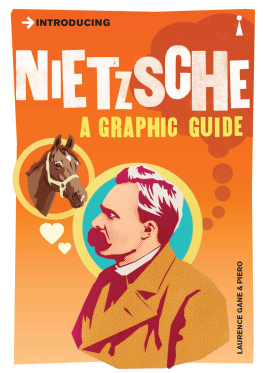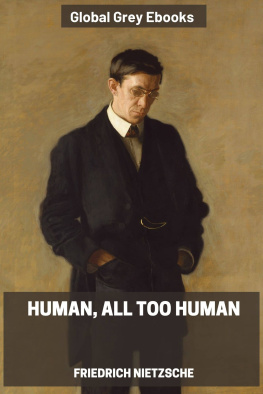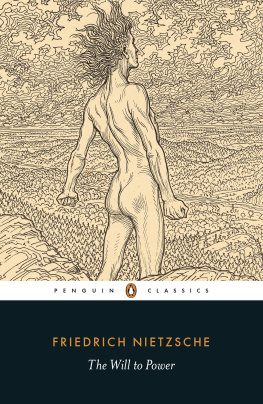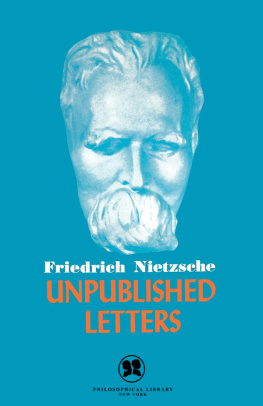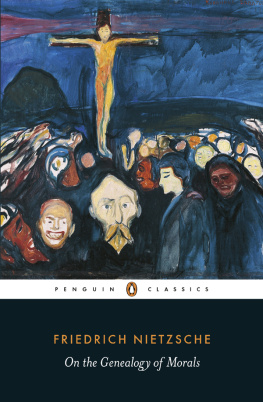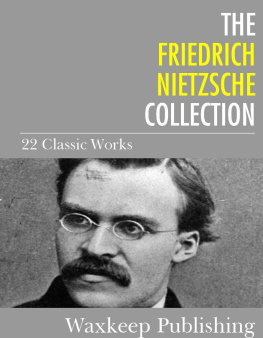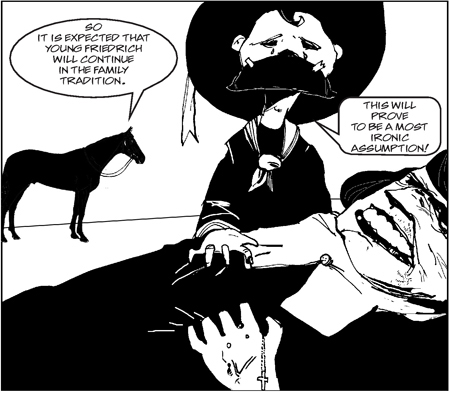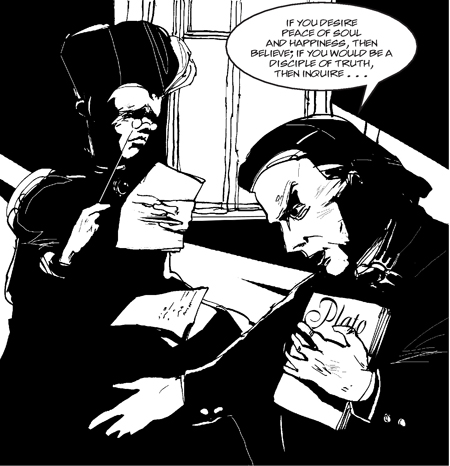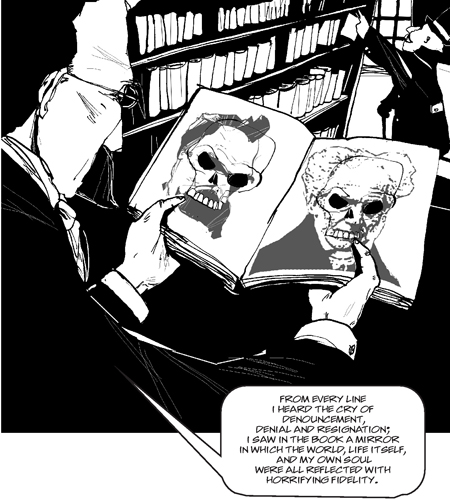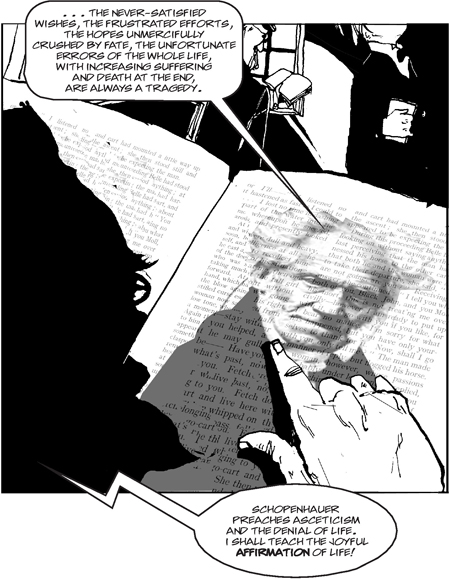Published by Icon Books Ltd, Omnibus Business Centre, 3941 North Road, London N7 9DP
email:
www.introducingbooks.com
ISBN: 978-184831-762-8
Text and illustrations copyright 2013 Icon Books Ltd
The author and artist have asserted their moral rights.
Originating editor: Richard Appignanesi
No part of this book may be reproduced in any form, or by any means, without prior permission in writing from the publisher.
Contents
Laurence Gane read Philosophy at University College London and Kings College, London. He teaches at the Royal College of Art and lives in Snowdonia, Wales.
Piero is an illustrator, artist and graphic designer. He earned his degree at the Art University of La Plata, Buenos Aires, and his work has twice been included in the Royal College of Art in London. He is also the illustrator of Introducing Shakespeare, Introducing Anthropology and Introducing Psychiatry.
At the front of the intellectual pantheon of the 19th century stand the figures of Karl Marx (181883), Sigmund Freud (18561939) and Friedrich Nietzsche (18441900). Marxs critique of the social-economic system and Freuds analysis of psycho-sexual life have been well assimilated by the late 20th and early 21st centuries. The ideas of Nietzsche, however, remain on the horizon of modern consciousness: a disturbing, even frightening, challenge which he knew would not be taken up in his own lifetime. Imagine a book which speaks of nothing but events which lie outside the possibility of general or even of rare experiences the first language for a new range of experiences. In this case, nothing will be heard!

my time has not yet come; some are born posthumously.
Today, more than 100 years later, we are slowly becoming aware of the profound changes in our relationship to truth, science and morality which Nietzsche foretold.
Early Years
On 15 October 1844 in Rcken, Saxony, the Lutheran pastor was blessed with the birth of his first child, Friedrich Wilhelm Nietzsche. The family claimed Polish aristocratic descent, and had produced many generations of clergymen.
SO it is expected that YOUNG friedrich WILL continue in the family tradition. this will prove to be a most ironic assumption!
Nietzsches father died of a brain injury following a fall when the boy was only five years old. The next year the family moved to Naumberg. The little boy was introspective and loved poetry and music. At school they called him the little pastor, and at home he dwelt with his mother, his sister, a grandmother and two aunts. A formative experience, as we shall see!
In 1858, at the age of 14, Nietzsche gained a scholarship to study at the famous Pforta school near Naumberg, a strict Lutheran boarding school of high academic status, where he acquired his love of classical studies. He excelled in Greek and Latin and was devoted to Plato and Aeschylus.
I COMPOSED POETRY AND MUSIC, AND TOGETHER WITH MY FRIENDS I FOUNDED A LITERARY SOCIETY, GERMANIA.
When, in 1864, Nietzsche left Pforta, there was still no hint of the changes to come in his thinking: he thanked his masters and stated his debt of gratitude to God and the King.
In October 1864, at 20 years of age, Nietzsche entered the University of Bonn to study theology and philology (the literary analysis of classical texts). He soon renounced theology. He explained this in a letter to his younger sister Elizabeth.
IF YOU DESIRE PEACE OF SOUL AND HAPPINESS, THEN BELIEVE; IF YOU WOULD BE A DISCIPLE OF TRUTH, THEN INQUIRE
The next year he moved to Leipzig to follow his favourite professor, Ritschl, who had taken a teaching post at the university.
Schopenhauer: the Denial of Life
At Leipzig, in a second-hand bookshop, Nietzsche discovered The World as Will and Idea by the German idealist philosopher Arthur Schopenhauer (17881860), whose atheism would echo through his own writings.
FROM EVERY LINE I HEARD THE CRY OF DENOUNCEMENT, DENIAL AND RESIGNATION; I SAW IN THE BOOK A MIRROR IN WHICH THE WORLD, LIFE ITSELF, AND MY OWN SOUL WERE ALL REFLECTED WITH HORRIFYING FIDELITY.
For Schopenhauer, like his great predecessor Immanuel Kant, there is a fundamental distinction between the world as it appears (phenomena) and the world as it truly is (noumena).
All appearances are mere physical manifestations of an underlying reality, which for Schopenhauer is the WILL.
THUS, BEHIND THE APPEARANCE OF MY BODILY MOVEMENTS LIES THE REALITY OF MY WILL OR DESIRE. THIS WILL DOES NOT EXIST LIKE MY BODY IN TIME AND SPACE IT IS NOT A PHYSICAL ENTITY AT ALL, BUT UNDERLIES THE WHOLE OF ANIMATE AND INANIMATE NATURE THROUGHOUT THE COSMOS.
This timeless, non-physical cosmic force doesnt lead Schopenhauer to the idea of a God. Instead, Will is seen as the source of all suffering, since willing never brings contentment, but only further desire! (An echo of the teaching of Gautama Buddha.) Thus we are condemned to the endless pursuit of impossible desires: We blow out a soap-bubble as long and as large as possible, although we well know that it will burst.
This suggests a pessimistic resignation to endure life as best we can. Although Nietzsche later rejected this profound pessimism, Schopenhauers sombre, atheistic image of a universe moved by blind Will with no ultimate meaning or solace stayed with him.
THE NEVER-SATISFIED WISHES, THE FRUSTRATED EFFORTS, THE HOPES UNMERCIFULLY CRUSHED BY FATE, THE UNFORTUNATE ERRORS OF THE WHOLE LIFE, WITH INCREASING SUFFERING AND DEATH AT THE END, ARE ALWAYS A TRAGEDY. SCHOPENHAUER PREACHES ASCETICISM AND THE DENIAL OF LIFE. I SHALL TEACH THE JOYFUL AFFIRMATION OF LIFE!
The Scholar as Anti-Scholar
In 1867, Nietzsche was called away from his studies to do military service in the Prussian army. Serving in an artillery regiment, he suffered a bad chest injury while mounting a horse. From childhood, his health had never been good and it was to decline steadily in the future. While convalescing, he began to reflect on the academic way of life and philology in particular. In a letter to his friend Erwin Rhode, 20 November 1867, he writes of the mole-like activities of the philological brood their indifference to the true and urgent problems of life.

